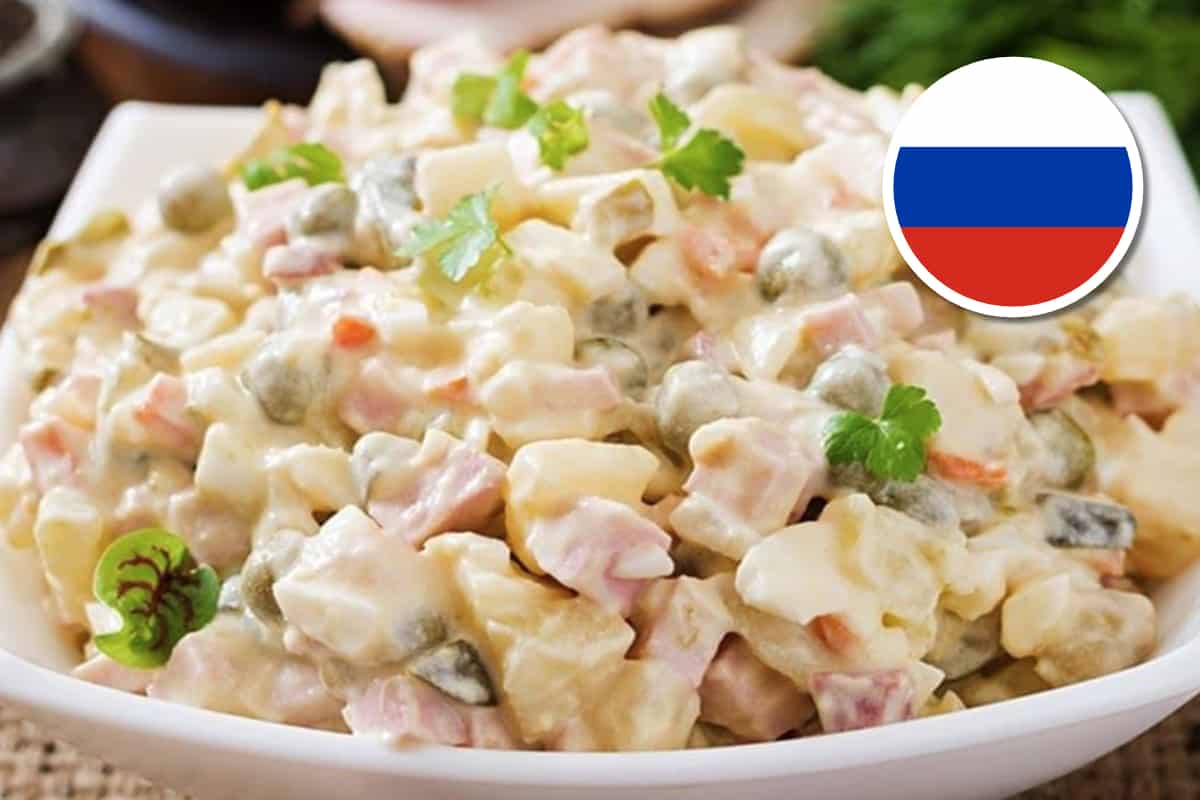Not many people think of Russian food as being internationally renown when compared to some more widespread cuisines, but there are more and more people around the world who are discovering it and learning to appreciate its qualities.
Russian food derives from the great geographical expanse of this country and its multicultural character, which has resulted in a great variety of dishes.
Given the characteristic cold climate of this region of the world, the country has a lot of delicious traditional dishes to help people keep warm.
People that discover Russian food for the first time, are often surprised by the variety of ingredients and flavors, which is influenced by its connection to Europe, Asia and the Middle East.
So if you want to know a little more about Russian food because you’re planning a trip to the country, or you simply want to prepare some Russian dishes in the comfort of your home, you’re in the right place!
List of 25 Interesting Facts About Russian Food Culture
1. Russian food derives from an innumerable wealth of dishes, due firstly to the multicultural character of the country and secondly to its vast geographical size.
2. Many dishes we consider today as typically Russian, are in reality of Polish, French or Italian origin. They arrived at the court of Catherine II through the empress’s contacts with Western Europe – a dreamed life, right?
3. Its gastronomic foundations are based on the peasant food of rural populations located in places with an extremely cold climate.
4. Many of the different dishes of soups and stews with meat and fish, are prepared by adding spices to native dishes using some techniques from the Mongols and Tatars in the 13th century.
5. Many of the dishes are influenced by the ancient silk road as well as the proximity to the Caucasus, as well as the proximity it had with the Ottoman Empire.
6. Russian food is very rich in variety, but also hyper caloric because more energy is needed to withstand the low temperatures they suffer in winter.
7. As the climate in Russia is almost always cold, most dishes are eaten hot. Soup is one of the main dishes and there are of many different types.
8. They also accompany most of the dishes with rye bread, which is even cheaper than wheat white bread.
9. Caviar is a specialty in Russia. There are two types: the red salmon caviar that we can order in any restaurant or food house, and black caviar, which you’ll only find in expensive restaurants.
10. In fact, for Russians at home, the most normal thing is to eat red caviar on a slice of white bread without toasting with butter. The black is reserved for special occasions, such as Christmas.
11. Did you know the word “caviar” comes from the Persian word “khavah” which means “egg”?
12. Russians don’t conceive a lunch without soup as a first course, and for dessert they usually have a sweet accompanied by black tea with lemon, which they drink every hour of the day!
13. Yep, you guessed it! The drink that most people drink in Russia is NOT vodka: it is tea!
14. And what about vodka? To take it, Russians have their own protocol: first of all, you must exhale through your mouth, then drink it in one gulp and then take a breath.
15. It’s said that Russians like to drink so much, that they even chose the Orthodox Christian religion (and not Islam) to be able to continue drinking their shots of vodka – although there is no historical evidence to confirm this.
16. And speaking about alcohol, up to 2011 beer was considered a food and not an alcoholic drink. In that year, former President Dmitry Medvedev proposed a law to change its category to try to reduce alcohol consumption in the country – these Russians know how to have a good time huh?
17. One of the most popular dishes in the country is the Russian salad, only that in Russia it’s not called that: it’s known as Olivier salad and takes the name of the Belgian chef who invented it while working in Saint Petersburg.
18. We previously said that black caviar (from sturgeon) is expensive, but there is another one that wins the award: Beluga caviar can cost up to $50,000 per kilo!
19. It’s said that during the Cold War era, Pepsi managed to introduce its drink into the Soviet Union. The only problem was that the ruble was not accepted as currency in the international market… So they chose to charge in Vodka!
20. When McDonald’s opened its first restaurant in Moscow in 1991, more than 30,000 people showed up to try their hamburgers! A record and a clear message to the world: up to that day, Russians had never eaten a hamburger.
21. As bread is so important in Russian food, there is the tradition to welcome important guests with a dish of “bread and salt”.
22. Although potatoes are a common ingredient of Russian food, for a long time Russian people only ate turnips, they didn’t know potatoes. King Peter brought the first potatoes from his foreign voyages, but Russians didn’t know how to eat it for some years.
23. During some time, Russian women were decorating their hairstyles with purple potato flowers, and some people even ate green berries (poisonous) instead of roots, which resulted in poisoning and even deaths.
24. Surprisingly, breakfast in Russian food usually consists of a cup of tea or coffee and a sandwich with some butter, cheese or ham, or some bakery, just for simplicity.
25. The most traditional non-alcoholic drink is Kvas (after Coca-Cola). By the way, due to the climate, soft drinks are usually served without ice, if you want it, order it separately.
Popular Russian Food
Despite being such a vast country where food can vary greatly from one region to another, there are certain recipes considered typical in the major part of the country. We’ve just listed some of them because they’re way too many.
Russian Starters and Side Dishes
Olivier Salad
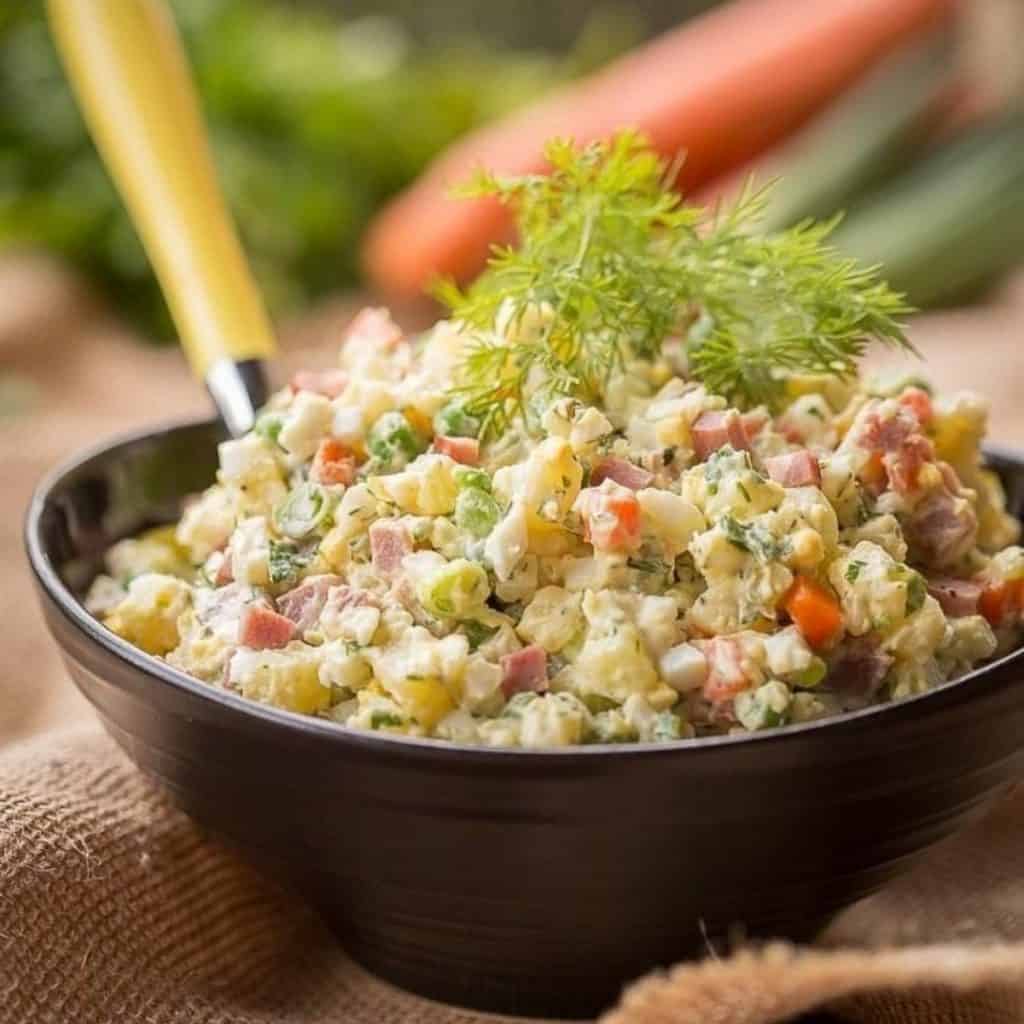
It’s known as Russian salad around the world. Olivier is a variant of potato salad invented in the 1860s by the chef Lucien Olivier.
The original was made with caviar, grouse, smoked duck, beef tongue and it had its own secret sauce, but today it is prepared with much simpler ingredients: boiled potatoes, carrots, eggs, peas, pickles, and chicken or meat.
Red and Black Caviar
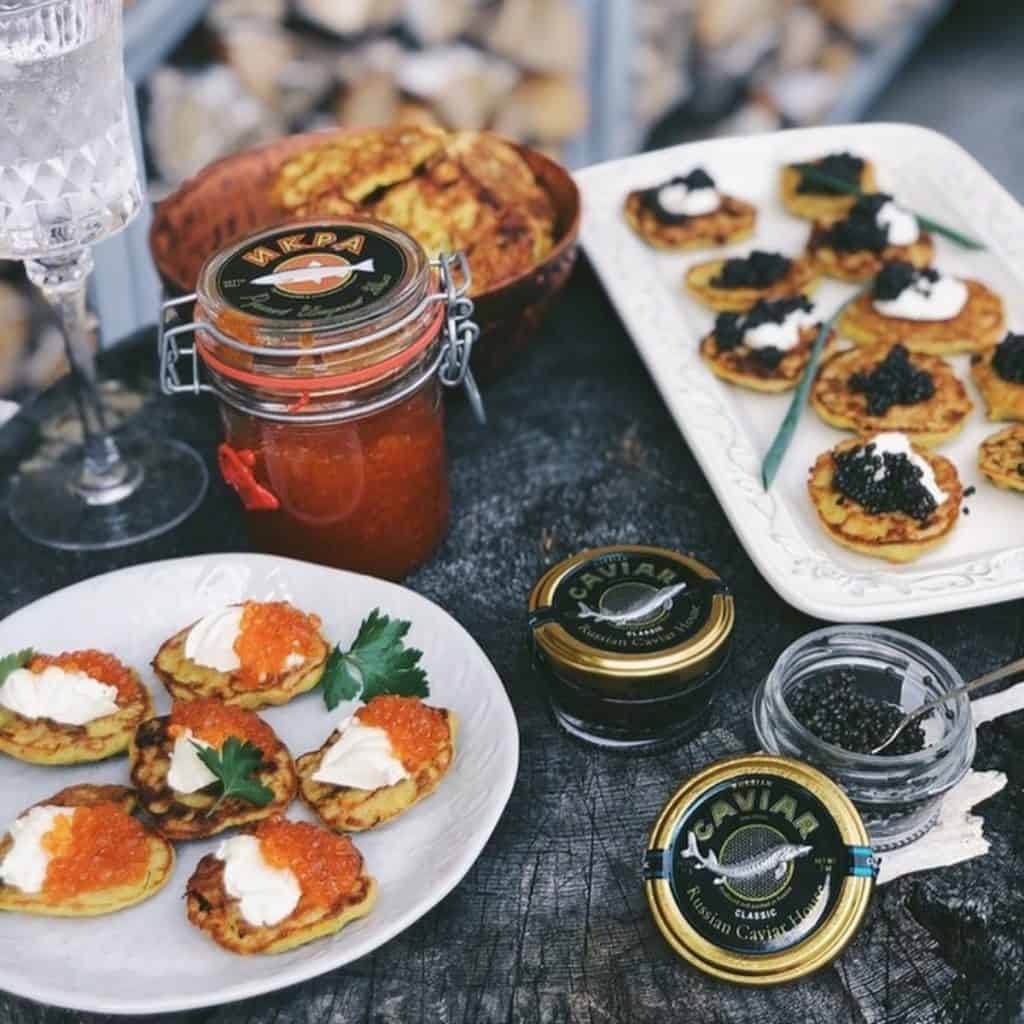
Quality caviar may be the most expensive food in the world, with most exclusive ones costing thousands of dollars. The best caviar is that of sturgeon caught in the Caspian Sea in Azerbaijan, Iran and Russia.
It consists of gelatinous pearls that explode in the mouth, and it has an intense taste of brine and fish.
Chebureki
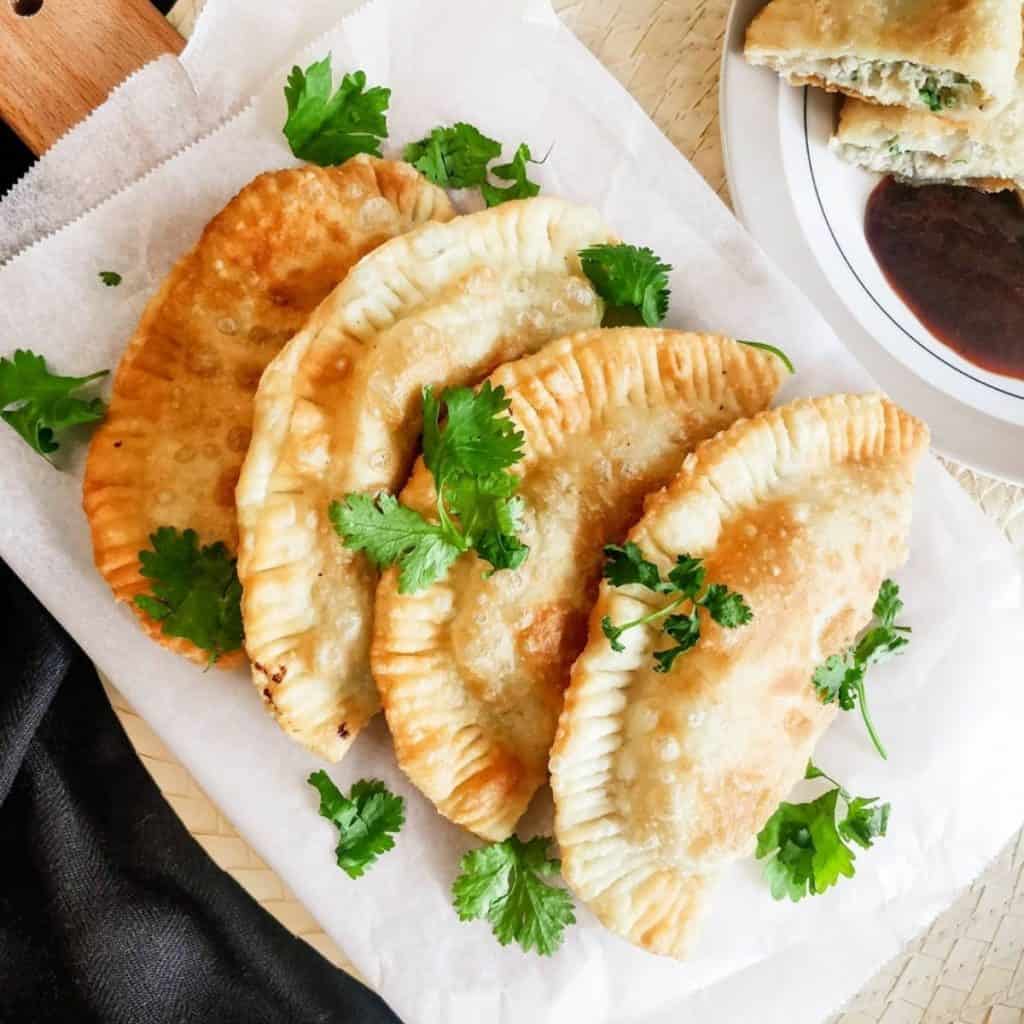
The word cheburek was adopted from the Crimean Tatar language and means literally ‘raw cake’. This dish is very popular in Tatar and Russian cuisine, but also in Asian and Caucasian menus.
It’s a kind of fried patty with a filling of minced meat and onion. It’s made with a single piece of dough that folds over the filling in a crescent shape.
Russian Soups
Borscht
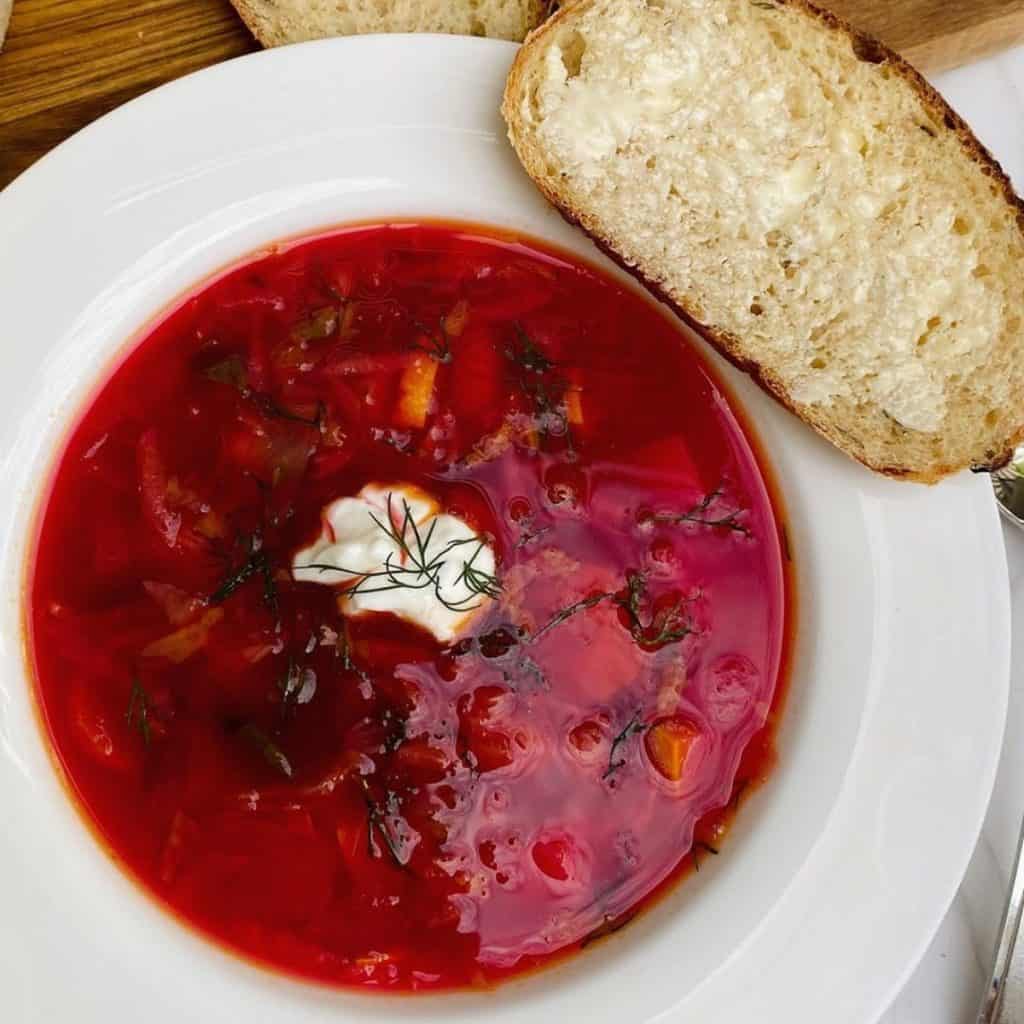
Borscht is a beet soup native to Ukraine that was quickly adopted as a Russian specialty. Beet is its main ingredient and the one that gives it its intense and characteristic color.
It is prepared with sauteed meat and vegetables, among which we can find cabbage, carrots, onions and potatoes and it can be served hot or cold.
Okroshka
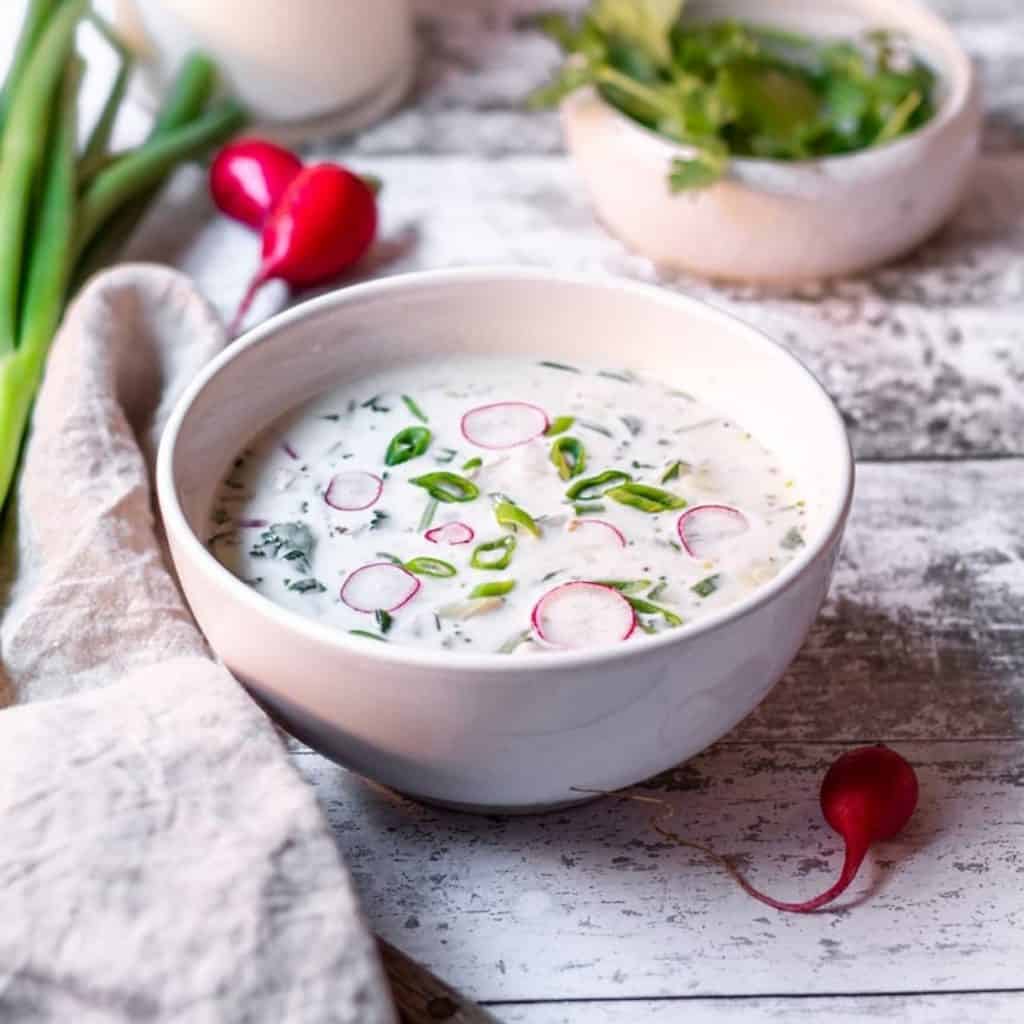
Okroshka is a cold soup, perfect for hot summer days.
Traditionally, it’s cooked with kvass, and it usually includes meat or mortadella, radish, cucumbers, chives, cooked potatoes and eggs.
Uja
Uja is a very traditional Russian soup that is prepared with sliced fish fillets. They mainly use salmon or cod.
To this Russian spoon dish are also added some vegetables cut into pieces such as, for example, potato, carrot or onion.
Russian Main Dishes
Pelmeni
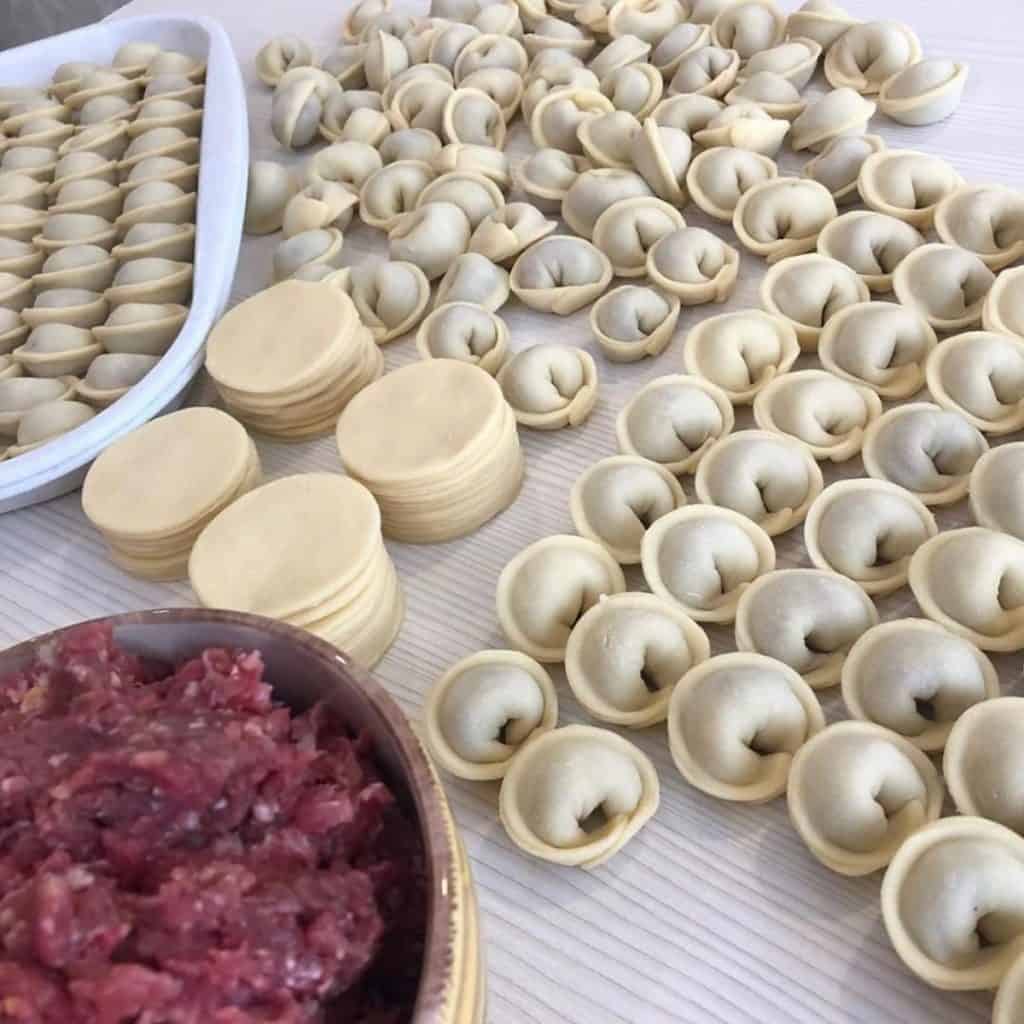
This is one of the best-known main dishes of Russian food. The Pelmeni is a dish that takes a long time to cook, so it’s usually reserved for special occasions – though you can always buy a package of frozen pelmeni.
Pelmeni can be stuffed with pork, lamb or beef. Their fine dough is what makes them so special and delicious. Pelmeni can be served with or without broth, but sour cream never fails.
Shashlik
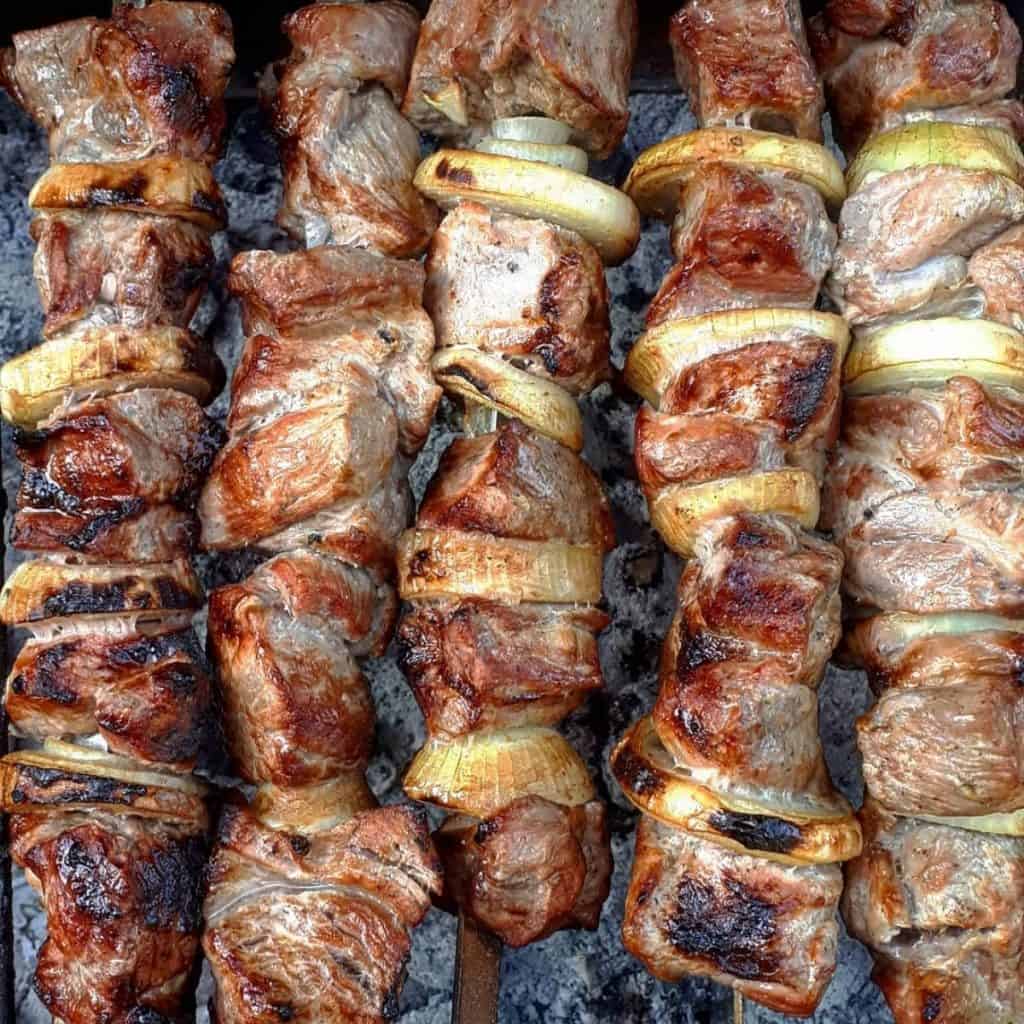
Shashlik is a popular roast beef skewer in Russia, Central Asia and the Caucasus.
It was originally made with lamb, but today it’s also made with pork, beef, or venison, depending on local preferences and religious beliefs.
The skewers are strung only with meat, or with alternating pieces of meat and vegetables, such as bell pepper, onion, mushroom and tomato.
Stroganoff
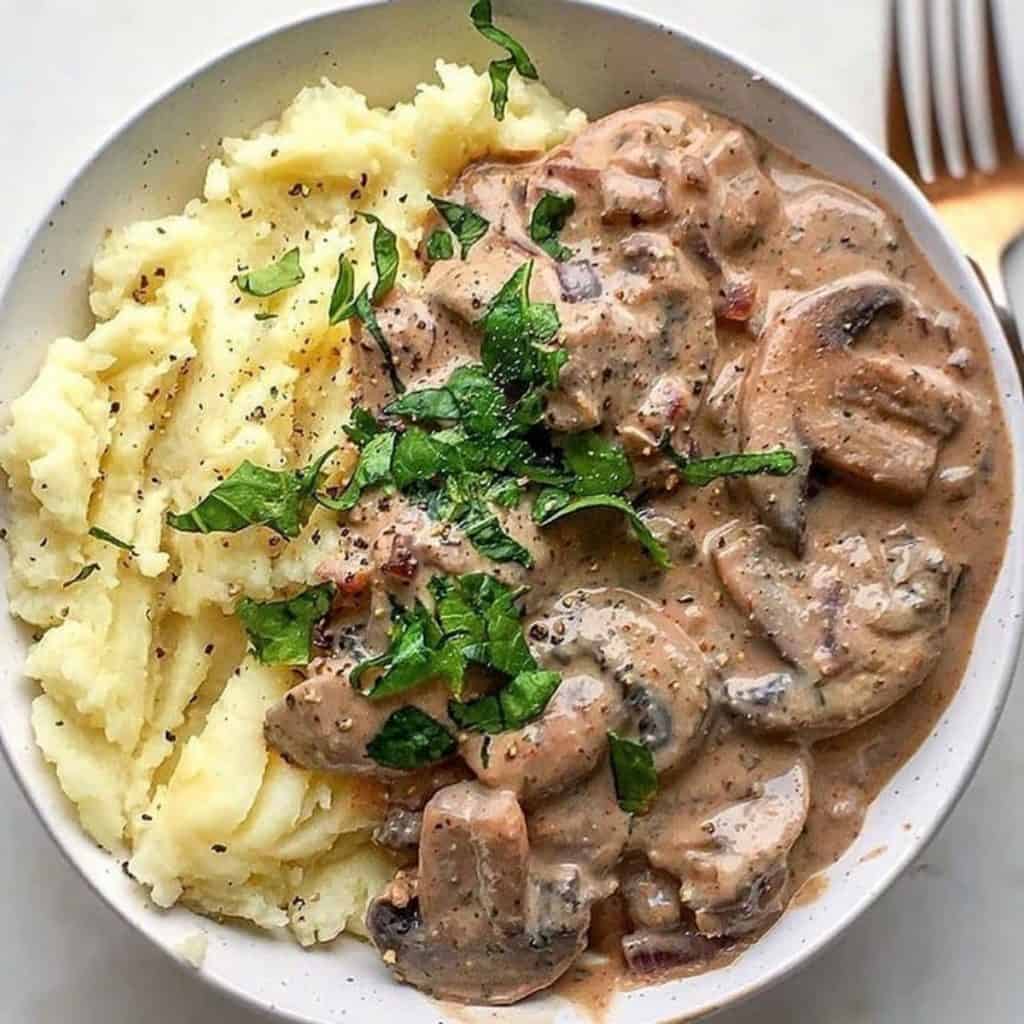
Stroganoff is a well-known dish internationally. It can be made with beef, onion, and mushrooms, all sauteed with white wine and sour cream.
It is supposedly named after Count Alexander Grigorievich Stroganoff, but the dish has several stories on its origin, although all agree that it dates back to the 19th century.
Kotleti
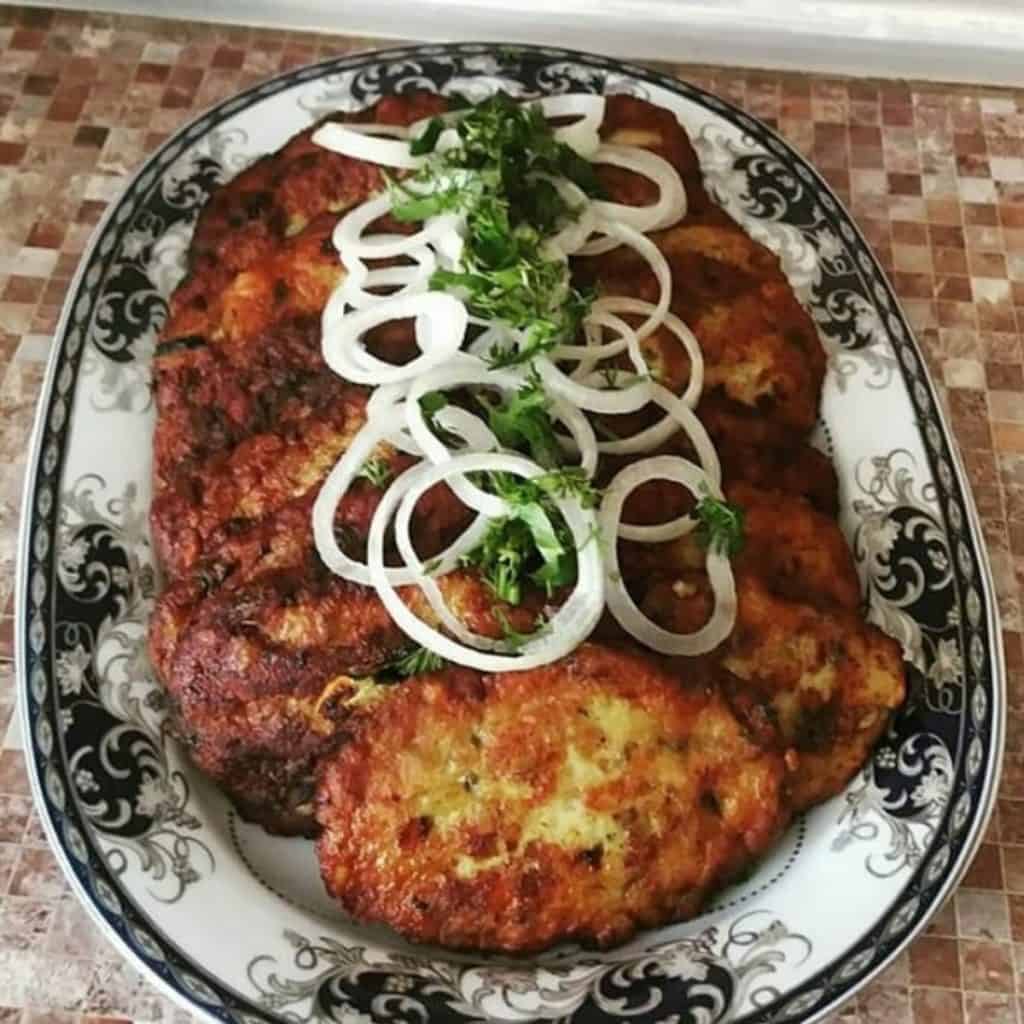
Kotleti are authentic Russian steaks. They are prepared with pork or chicken, which is especially juicy and tasty thanks to the minced onion and the breadcrumbs that are added to it.
They are fried and very crispy. Kotleti are served with an ideal accompaniment to mashed potatoes, pasta or buckwheat kasha.
Russian Desserts
Blini

Blini are thin wheat pancakes that can have a variety of fillings like jam, sour cream, caviar, cheese or chocolate.
It’s the Russian equivalent of pancakes, and they’re such an important part of Russian gastronomy, that a festival called Maslenitsa celebrates the beginning of spring with them…
Ponchik
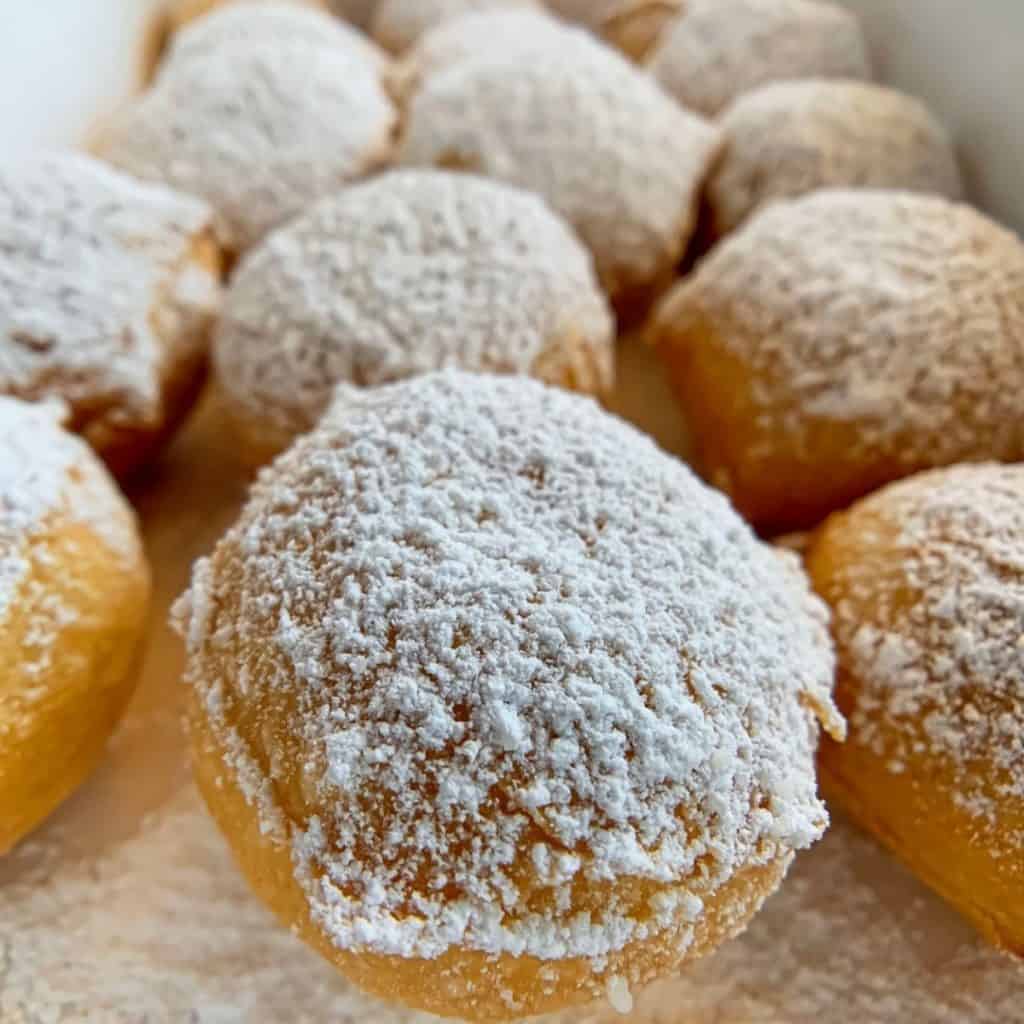
Ponchik is a typical Russian sweet made from cottage cheese dough that is fried in vegetable oil and covered with sugar or chocolate, but the secret of a delicious ponchik is the cheese.
Other key ingredients are sour cream and rum, which are mixed with flour, salt and sugar.
Kolomna Pastila
Pastila is a traditional Russian fruit sweet. They are small squares of pressed fruit paste. It’s made from the paste of applesauce, berry pulp, sometimes honey and other sugar and egg white.
In Imperial Russia, these little treats were served with tea and had a white foam on top, like marshmallow, but flavored with fruit.
Pryanik
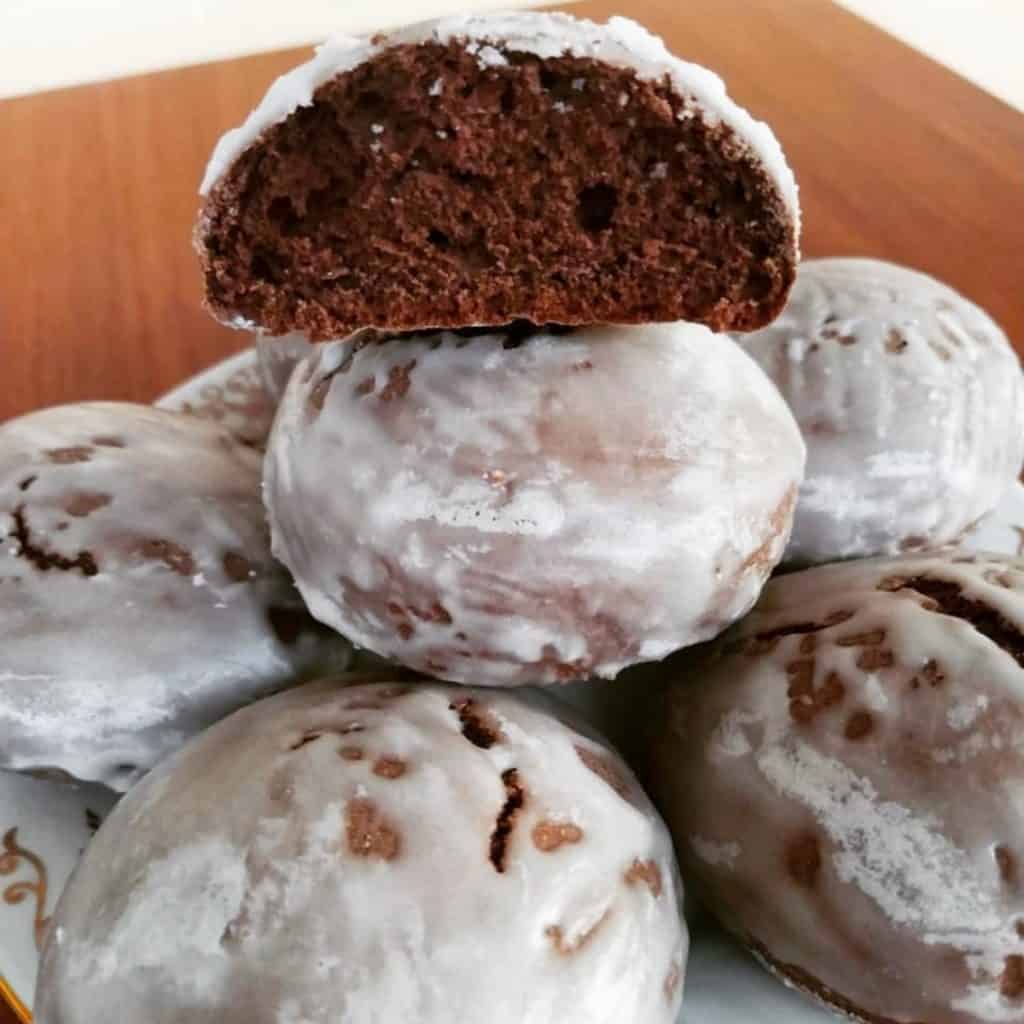
Pryanik are a traditional sweet type of cookies from Russia and some other countries. Pryaniki are made with flour and honey, but they also include sugar in modern versions.
Russian Drinks
Kvass
Kvas is a traditional and very refreshing drink for the summer, and it’s known as the Russian Coca Cola, containing less than 1% alcohol.
It’s made with rye and malt flour or also with bran flour, a little rye bread and apples. This mixture is then left to ferment in water.
Kefir
Milk kefir is one of the oldest known dairy products in Russian food, being consumed thousands of years ago in the Caucasus.
In general, it provides minerals, especially calcium, magnesium and phosphorus; it’s rich in vitamins B and K, essential aminoacids and other easily digestible proteins.
Vodka
Vodka is an alcoholic beverage of 40, 45 or 56 degrees of alcohol widely consumed by Russians. During World War II, the army distributed vodka to its soldiers so they would have more courage during the war.
Popular Ingredients in Russian Food
Russian gastronomy includes a great variety of ingredients, but the following are the most used.
Meat and Fish
They’re used in all types of dry dishes and soups. These ingredients include lamb, pork or beef meats.
In the case of fish, they are mainly freshwater fish such as carp and sudak, but also fish found in northern areas of the country like sturgeon, salmon, pike and trout.
Vegetables
The most popular are cabbage, potatoes and cold tolerant greens. Pickling cabbage, cucumbers and tomatoes are used in brine to preserve other vegetables for winter use.
Fruits
In Russia there is a great tradition of preserving the fruits, vegetables and mushrooms grown during the summer.
The compotes and jams are made of fruits and berries like strawberry, raspberry, blueberry and others.
Bread
There are several types, the most typical is black bread, made from rye flour; there are many types of this bread and it’s very healthy. There is also normal bread called white bread made from wheat flour.
Dairy Products
In Russia there is a great variety and tradition of eating dairy products, many of which aren’t known in other countries. In stores you can buy many kinds of cottage cheese “tvorog”, “kefir” – a drink similar to yogurt.
Russian Herbs and Spices
- Parsley: Mainly used in salads and also to decorate dishes.
- Pepper: Russians use mainly black pepper.
- Allspice: It’s often used in unground form in marinades and canned foods.
- Sage: Mainly used in fish dishes, but also in legumes, vegetables, jams and marmalade.
- Horseradish: The root of this plant is used in many spicy sauces for meat and fish dishes.
- Dill: Dill weed simply makes sense in a Russian diet of fish and milk-based dishes.
- Tarragon: When used in any Russian recipes with vinegar and/or mustard, tarragon is delightful.
- Garlic: It offers a taste that is versatile enough for a great variety of dishes and it stores well for use in winter cooking.
Russian Regional Food Specialties
Russian food is like a melting pot where many regions have fused dishes from many different traditions along history, creating their own specialties.
Sochi
In Sochi the most popular dishes are from Caucasian cuisine. Mainly meat-based dishes, vegetables and red wine. Some of the specialties are: the shashlik (meat or fish grilled on the skewer), satsivi (Georgian sauce), kharcho soup and khachapuri (cheese, meat or bean bread).
Kazan
Kazan cuisine combines the gastronomic traditions of Tatars, Bulgarians and Russians. They have a variety of dishes, but probably the most important in Tatar cuisine is the bakery: a symbol of well-being and prosperity.
Kolomna
Kolomna is famous for its Kolomna’s “pastila”, which is an old Russian delicacy made of sour apples, honey and molasses. Many people say it’s like a kind of marshmallow. It’s part of many Russian culinary traditions since the days of Ivan the Terrible, and there is even a Kolomna Pastila Museum.
Vladivostok
Located at 9,314 kilometers from Moscow, is the only place in Russia where you can find the sea cucumber. Trepang is an invertebrate that looks like a spiny worm, a delicacy in Japan, Korea and China.
St. Petersburg
Smelt is a fish that can be found in the Neva and the Gulf of Finland, and it’s also the unofficial gastronomic symbol of St. Petersburg; it’s so important that they even have a festival for it.
Dagestan
In this region you can find the best mutton in Russia, and it’s traditionally prepared by men, while women make pastries. This meat is what sustained the region’s ancestors some centuries ago. Some of the most delicious dishes are the mutton “shurpa” soup or the “shashlik” kebab.
Russian Cooking Styles and Techniques
History and climate have been determining factors when creating the cuisine of any town or country, let’s see how it has been in the case of Russia.
Technology
The structure of the traditional Russian oven is something that has practically not changed for centuries. It is a tunnel-shaped chamber whose interior temperature reaches 200 degrees. The degree of effectiveness of these ovens is very high: the wood burns completely and the heat is maintained for a long time thanks to its high thermal capacity.
Preservation Techniques
As winters are long in Russia, the cold help keep meat and fish fresh and salty for a long time without losing their nutritional value.
In addition, other products such as wheat, vegetables, mushrooms, berries or honey have always been very abundant and had to be preserved.
This helped in developing the well-known Russian culinary techniques to preserve them: drying in the oven and in the sun, salting, maceration, fermentation and preservation in honey.
Religious Influence
Orthodox is the main religion in Russia.
According to their canons, almost half of the days are vegetarian because they correspond to periods of fasting. And before Easter, in full frost, for six weeks it is forbidden to consume any product of animal origin.
This fact influenced a lot of the Russian food. For example, the animal protein, which provides energy especially in the colder times of the year, in some Russian dishes was replaced by nuts and legumes that were added to stews, porridge, pancakes, cakes and jellies.
When the fast ended, the villages slaughtered livestock and birds and began to eat meat and fish:
- Sschi, soup with pork and sauerkraut
- Borsch, soup with veal
- Rassolnik and kalia, soup with meat or fish
- Sturgeon and other fish
- Crepes with black and red caviar
- Cakes stuffed with viziga
- Suckling pig stuffed with buckwheat
- Goose meat with macerated apples
Russian Food Culture is Real!
If you are new to Russian food don’t stop fully immersing yourself in their customs and trying their recipes full of a rich and flavorful history. The typical gastronomy of Russia won’t leave you disappointed.
Each country has its own culture and traditional cuisine. So, if you want to know the true essence of a country, one of the best things you can do is to know and taste its food.
After this virtual feast, you probably want more than ever to visit the country or just try to prepare some Russian food in your home. Enjoy!

